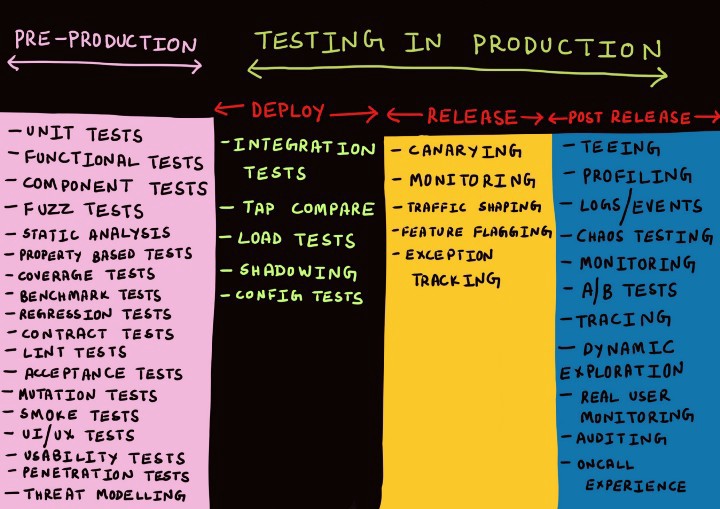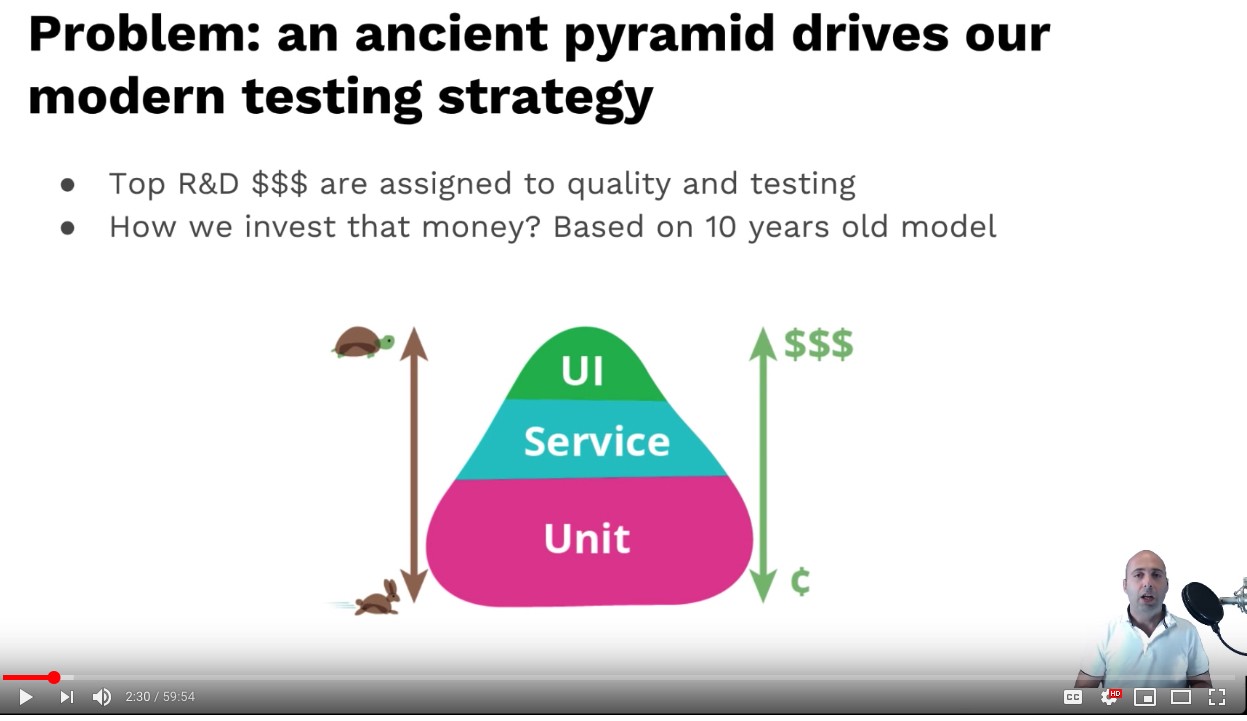⚪ ️2.1 Enrich your testing portfolio: Look beyond unit tests and the pyramid
:white_check_mark: Do: The testing pyramid, though 10> years old, is a great and relevant model that suggests three testing types and influences most developers’ testing strategies. At the same time, more than a handful of shiny new testing techniques emerged and are hiding in the shadows of the testing pyramid. Given all the dramatic changes that we’ve seen in the recent 10 years (Microservices, cloud, serverless), is it even possible that one quite-old model will suit all types of applications? shouldn’t the testing world consider welcoming new testing techniques?
Don’t get me wrong, in 2019 the testing pyramid, TDD, and unit tests are still a powerful technique and are probably the best match for many applications. Only like any other model, despite its usefulness, it must be wrong sometimes. For example, consider an IoT application that ingests many events into a message-bus like Kafka/RabbitMQ, which then flow into some data-warehouse and are eventually queried by some analytics UI. Should we really spend 50% of our testing budget on writing unit tests for an application that is integration-centric and has almost no logic? As the diversity of application types increases (bots, crypto, Alexa-skills) greater are the chances to find scenarios where the testing pyramid is not the best match.
It’s time to enrich your testing portfolio and become familiar with more testing types (the next bullets suggest a few ideas), mind models like the testing pyramid but also match testing types to real-world problems that you’re facing (‘Hey, our API is broken, let’s write consumer-driven contract testing!’), diversify your tests like an investor that builds a portfolio based on risk analysis — assess where problems might arise and match some prevention measures to mitigate those potential risks
A word of caution: the TDD argument in the software world takes a typical false-dichotomy face, some preach to use it everywhere, and others think it’s the devil. Everyone who speaks in absolutes is wrong :]
❌ Otherwise: You’re going to miss some tools with amazing ROI, some like Fuzz, lint, and mutation can provide value in 10 minutes
✏ Code Examples
:clap: Doing It Right Example: Cindy Sridharan suggests a rich testing portfolio in her amazing post ‘Testing Microservices — the same way’

☺️Example: YouTube: “Beyond Unit Tests: 5 Shiny Node.JS Test Types (2018)” (Yoni Goldberg)
